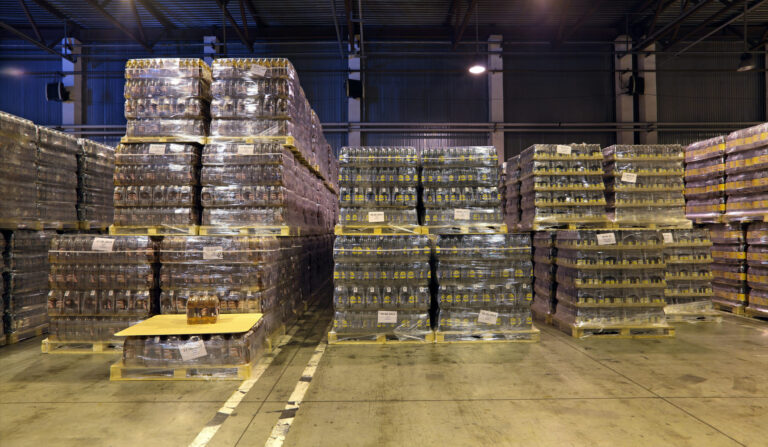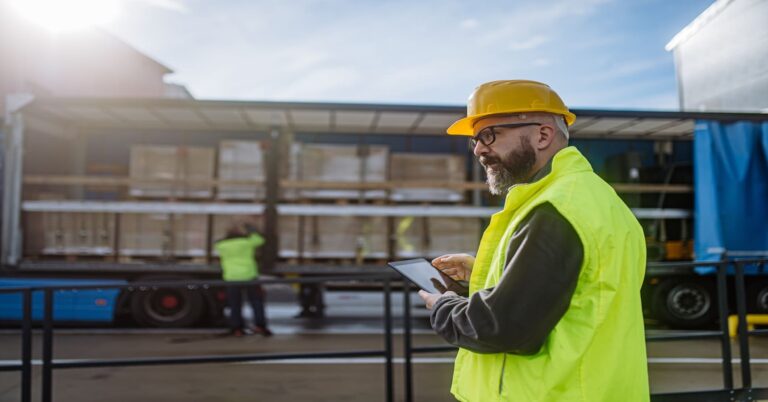The Influence of Ecommerce on the Future of Warehousing

The rapid growth of ecommerce has revolutionized how goods are stored, managed, and delivered, significantly influencing the future of warehousing. As online shopping becomes increasingly prevalent, warehouses are transforming from static storage facilities into dynamic hubs of efficiency, technology, and innovation. Businesses must embrace these changes to meet rising consumer expectations for speed, accuracy, and convenience.
This blog explores the profound impact of ecommerce on warehousing and highlights key trends shaping the industry.
Why Ecommerce is a Game-Changer for Warehousing
Ecommerce has elevated warehousing from a supporting function to a pivotal element in the supply chain. The demand for faster deliveries and real-time tracking has spurred significant changes in warehouse operations, pushing businesses to adopt agile, scalable, and technology-driven solutions.
Warehouses today do much more than store goods. They are vital hubs for order fulfillment, inventory management, packaging, and customer returns. The rise of ecommerce has shifted the focus from bulk storage to efficient handling of diverse and dynamic inventory. This shift has transformed warehousing into a strategic asset, where the ability to adapt quickly to market changes can determine a business’s success.
Key Impacts of Ecommerce on Warehousing
1. Technology-Driven Operations
Warehouses are evolving to incorporate advanced technologies such as robotics, artificial intelligence (AI), and automated storage and retrieval systems (ASRS). These innovations enhance order accuracy, streamline picking and packing, and enable warehouses to handle higher volumes efficiently.
AI-powered systems also provide insights into demand forecasting, inventory optimization, and route planning, helping businesses maintain operational excellence even during peak seasons.
2. Strategic Location and Micro-Fulfillment Centers
The need for rapid delivery has prompted businesses to rethink warehouse locations. Many are adopting a decentralized approach, establishing smaller, strategically placed micro-fulfillment centers near urban hubs.
These facilities enable faster last-mile delivery and reduce transportation costs, particularly for time-sensitive products like groceries and perishables. This trend enhances customer satisfaction and aligns with ecommerce’s emphasis on speed and convenience.
3. Omnichannel Fulfillment
As businesses blend online and offline sales channels, warehousing must support omnichannel operations. Modern warehouses handle online orders, in-store pickups, and returns from a single location, requiring sophisticated inventory management systems to keep track of stock across channels.
Omnichannel fulfillment ensures that customers receive a seamless shopping experience, whether they’re buying online or in-store, driving loyalty and repeat business.
4. Sustainability in Warehousing
The environmental impact of ecommerce has spurred demand for sustainable warehousing practices. Warehouses are integrating green initiatives such as solar power, energy-efficient lighting, and recyclable packaging materials.
Additionally, optimized layouts and automated systems minimize energy consumption and waste, aligning with broader corporate sustainability goals and consumer preferences for eco-friendly businesses.
Leading Ecommerce Companies Driving the Future of Online Shopping
The ecommerce industry is dominated by a few key players that have set the benchmark for online shopping experiences. These companies not only shape consumer expectations but also drive innovation in warehousing and logistics.
- Amazon: The undisputed leader in ecommerce, Amazon revolutionized online shopping with its vast product selection, seamless checkout process, and lightning-fast delivery. Its extensive network of fulfillment centers and use of advanced technologies like robotics and AI make it a giant in the warehousing and logistics space.
- Alibaba: As the largest ecommerce platform in Asia, Alibaba connects millions of buyers and sellers worldwide. It specializes in both B2C and B2B transactions, with a focus on bulk ordering and international trade, which heavily relies on scalable and efficient warehousing solutions.
- Walmart: While traditionally a retail powerhouse, Walmart has successfully expanded its ecommerce presence. By integrating its physical stores with online fulfillment, it has created a robust omnichannel model that combines speed and convenience.
- eBay: Known for its unique auction-style platform, eBay continues to be a major player in global ecommerce. Its focus on peer-to-peer selling requires flexible and diverse warehousing solutions for sellers of all sizes.
- Shopify: Although not a direct ecommerce retailer, Shopify empowers millions of businesses to build their online stores. Its fulfillment network provides small and medium businesses with access to warehousing and logistics services, helping them compete with larger brands.
These industry leaders are not only shaping the ecommerce market but also setting trends for warehousing strategies. Their emphasis on efficiency, speed, and technology integration has redefined the role of warehousing in the modern supply chain.
Stay Ahead in Ecommerce with OLIMP’s Warehouse Solutions!
The ecommerce landscape is evolving rapidly, and staying competitive means embracing the latest trends. Businesses that adapt to these changes, from adopting new technologies to optimizing their supply chains, will thrive. As the future of warehousing evolves, make sure your company stays ahead by acting now.
With OLIMP, finding the right warehouse solution for your business is simple. Our platform connects you with flexible, scalable warehouse options to meet the growing demands of ecommerce. Focus on growing your business while we handle the logistics to ensure fast and efficient delivery to your customers.
You may be interested in

Top Alcohol 3PL Companies in Los Angeles
Los Angeles is a dynamic hub for various industries, including entertainment, tech, and manufacturing. However, it also plays a critical role in the alcohol distribution sector. With an ever-growing variety of alcoholic beverages—from craft beers to high-end wines and spirits—manufacturers, distributors, and retailers need reliable third-party logistics (3PL) partners to manage their operations. This blog […]

What Is Pallet Rework?
Transporting products across the country comes with significant risk, like destructive pallet shifts. Merchandise, from glass bottles to boxes, can consequently break or be crushed. A pallet rework is necessary to identify the issue and sort and balance the products to prevent a second pallet shift. What is the standard trailer size? Goods are shipped […]

Best Practices for Warehouse Receiving Processes
In this article, we’ll discuss the best practices for optimizing your warehouse receiving processes. Whether you’re looking to improve accuracy, speed, or communication, these strategies will help you achieve your goals. What is the warehouse receiving? The warehouse receiving process is a critical first step in both inventory management and ecommerce fulfillment. It encompasses everything […]